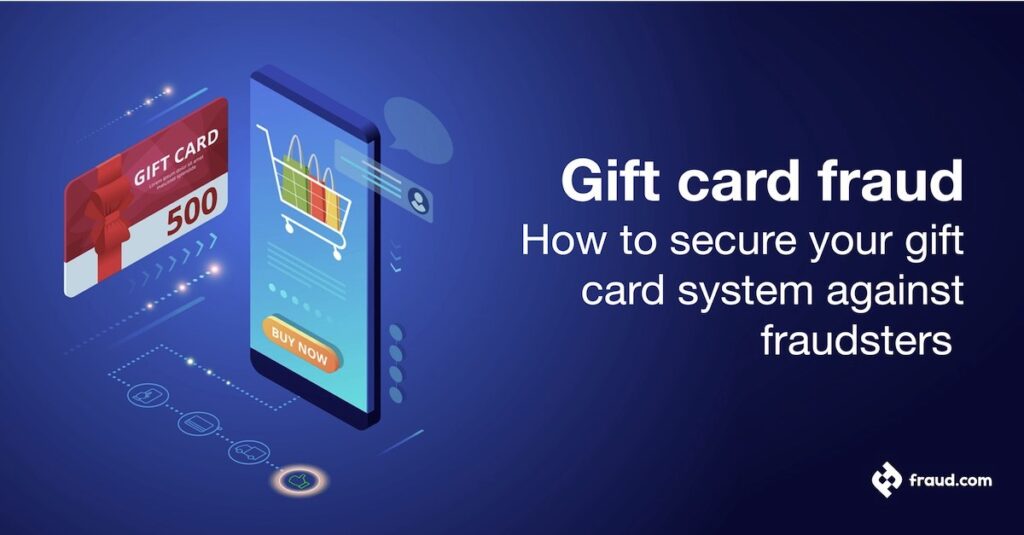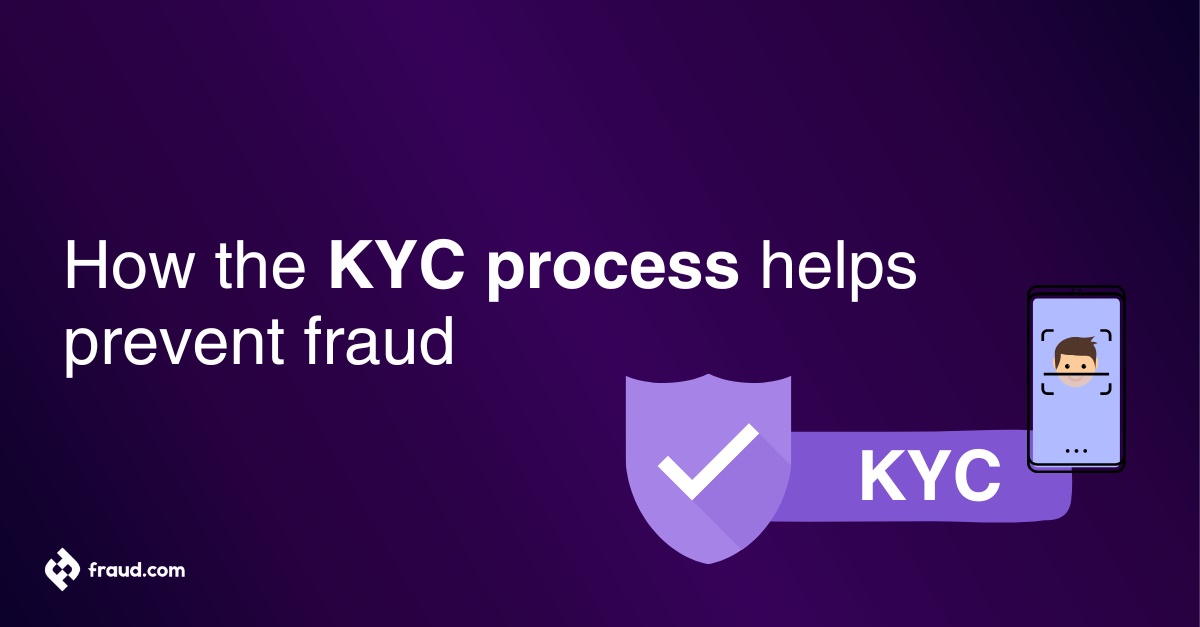Gift card fraud has become a significant concern for retail businesses, as fraudsters continue to exploit the vulnerabilities in gift card systems. With the rapid growth of e-commerce and the increasing popularity of gift cards as a convenient and flexible gifting option, it is more important than ever to ensure that your gift card system is secure and robust against potential threats.
In this article, we will dive into the various types of gift card fraud, discuss the risks associated with it, and provide practical tips and strategies for securing your gift card system against fraudsters. As experts in fraud detection, prevention, identity verification, and fraud orchestration at fraud.com, our goal is to arm you with the knowledge and tools necessary to safeguard your business and customers from the detrimental impacts of gift card fraud. Let us take a proactive approach to combating this growing issue and protect the value and reputation of your gift card program.
Table of Contents
ToggleWhat is gift card fraud?
Gift card fraud involves the theft, duplication, or unauthorised use of gift cards. Fraudsters employ a variety of methods to exploit vulnerabilities in gift card systems, including hacking into accounts, generating counterfeit cards, and manipulating card balances. This type of fraud not only results in financial losses for businesses and cardholders but can also damage a company’s reputation and customer trust.
As gift cards continue to gain popularity as convenient and versatile payment options, it is increasingly important for businesses to implement robust security measures to protect their gift card systems and safeguard against fraudulent activities.
Gift card fraud prevention
As a retail business, it’s very important to understand how to prevent gift card fraud. Consider implementing the following measures:
- Enhance tech support: Invest in advanced tech support systems to monitor and detect unusual gift card activities and transactions.
- Educate customers about card fraud: Inform customers about common gift card scams and how to avoid gift card fraudsters.
- Monitor gift card purchases: Keep a close eye on gift card purchases, especially those involving multiple gift cards, to identify potential scams.
- Implement gift card balance protection: Secure your customers’ gift card balances by requiring a PIN or additional verification for transactions.
- Act quickly on red flags: Respond swiftly to suspicious activity or reports of gift card fraud. Acting quickly can help mitigate potential losses.
- Verify customer identity: Use strong identity verification methods, coupled with strong authentication such as Two-Factor Authentication (2FA) and Multi-Factor Authentication (MFA).
- Restrict target gift cards: Limit the number of gift cards a customer can buy, especially for popular target gift cards that are more susceptible to fraud.
- Encourage customers to use credit cards: Promote the use of credit cards for gift card purchases, as card issuers often provide better fraud protection than other payment methods.
- Report incidents to the relevant entity: Ensure that any identified gift card fraud cases are reported to relevant agencies such as the Federal Trade Commission (FTC) in the USA or the Competition and Markets Authority (CMA) in the UK to help combat scams at a larger scale.
- Secure gift card numbers: Implement security measures to protect gift card numbers from being intercepted or stolen during transactions.
- Monitor gift cards online: Regularly check your online gift card system for any signs of hacking, such as unauthorised access or changes to gift card balances.
- Train employees to spot fraud: Educate your staff on the warning signs of gift card scams and how to handle suspicious transactions.
- Implement a fraud detection system: Invest in a comprehensive fraud detection and prevention system specifically designed for gift cards to help safeguard your business from potential threats.
By implementing these best practices, retail businesses can minimise the risk of gift card fraud and protect both their customers and their bottom line.
How does gift card fraud work?
Gift card fraud is a growing concern for both retailers and consumers, as it can lead to significant financial losses and damaged brand reputation. Understanding how this type of fraud operates is essential in developing effective strategies to prevent and combat it.
- Data theft: gift card scammers use various techniques such as phishing, hacking, or data breaches to steal gift card numbers and their corresponding PINs.
- Card generation: Fraudsters use software tools to generate valid gift card numbers by exploiting weaknesses in the retailer’s card generation algorithm.
- Social engineering: Scammers pose as store employees or customer service representatives to trick unsuspecting customers into divulging their gift card details.
- Physical tampering: Criminals manipulate physical gift cards in stores, either by scratching off the protective layer to reveal the PIN or by replacing the card’s barcode with a fraudulent one.
- Balance checking: Once the gift card information is obtained, fraudsters check the balance on the card using retailer websites, automated phone systems, or third-party applications.
- Unauthorised transactions: With access to the gift card’s details, criminals make unauthorised purchases either online or in-store.
- Reselling on secondary markets: Fraudsters often sell stolen gift cards at discounted rates on online marketplaces, auction sites, or social media platforms.
- Laundering illicit funds: Gift card fraud can also be used to launder money by purchasing high-value items with stolen gift cards and then reselling those items for cash. This process effectively “cleans” the illegally obtained funds, making them harder to trace.
- Employee fraud: Sometimes, retail employees themselves may be involved in gift card fraud by creating unauthorised gift cards or manipulating balances on existing cards.
- Return fraud: Fraudsters may use stolen gift cards to purchase items and then return them without a receipt, receiving a new gift card or cash refund as a result.
- Chargeback fraud: In some cases, scammers use stolen credit card details to purchase gift cards and then file a chargeback on the credit card transaction, claiming the purchase was unauthorised. This allows them to retain both the gift card balance and the refunded amount from the chargeback.
- Bulk activation: Criminals may exploit vulnerabilities in a retailer’s gift card activation process to fraudulently activate multiple cards at once, increasing the speed and scale of their fraudulent activities.
By understanding the various methods used in gift card fraud, businesses can take targeted and effective measures to secure their gift card systems and protect both themselves and their customers from fraudsters.
Gift card fraud examples
Gift card fraud can take many forms, and it is essential to be aware of the various methods that fraudsters use to exploit gift card systems. By understanding these techniques, businesses can better protect their systems and customers from potential attacks. Here are some common examples of gift card fraud:
- Card cloning: In this type of fraud, criminals copy the information from a legitimate gift card and create a duplicate card. They then use the cloned card to make purchases, while the original cardholder remains unaware until they attempt to use their card and find the balance depleted.
- Account takeover fraud: Cybercriminals may gain access to a customer’s online account, where they can view and use the saved gift card information. They can also change the email address or password, locking the legitimate user out of their account.
- Physical theft: Criminals may steal inactivated gift cards from stores and then use illicit methods to activate them. Alternatively, they may steal activated cards from customers, either by pickpocketing or through more sophisticated means, such as tampering with gift card displays and replacing legitimate cards with counterfeit versions.
- Balance manipulation: In some cases, fraudsters can exploit vulnerabilities in a company’s gift card system to artificially increase the balance on a card. This allows them to make purchases beyond the original value of the gift card or sell the inflated balance to unsuspecting people that buy gift cards.
- Online marketplace scams: Fraudsters may sell gift cards with little or no remaining balance on online marketplaces, taking advantage of gift card buyers who do not verify the card’s balance before completing the transaction. They may also use stolen credit card information to purchase gift cards and then sell them online, effectively laundering the stolen funds.
- Gift card swapping: Scammers purchase a legitimate gift card, then remove the card’s information and replace it with a duplicate card that has no value. They return the fraudulent card to the store, and unsuspecting customers end up purchasing worthless cards.
- Malware and spyware attacks: Scammers use malware or spyware to infect a victim’s computer or smartphone, allowing them to steal gift card information when the victim uses their device to purchase or redeem a gift card.
- Fraudulent gift card offers: Scammers create fake promotional offers or contests that promise free gift cards in exchange for personal information or completing online surveys. These scams are often used to harvest sensitive data, which can be used for identity theft or sold to other criminals.
- QR code tampering: Fraudsters create fake QR codes and place them over the original QR codes on physical gift cards. When an unsuspecting customer scans the QR code, they are directed to a fraudulent website or prompted to download malware.
- Fake customer support scams: Scammers impersonate customer support representatives and contact customers, claiming there is an issue with their gift card
By understanding these common examples of gift card fraud, businesses can better identify potential vulnerabilities in their gift card systems and implement appropriate security measures to protect against fraudsters. In the next section, we will explore various strategies for securing your gift card system and preventing these types of attacks.`
How to prevent gift card fraud with aiReflex and Udentify
Preventing gift card fraud is essential for businesses looking to protect their customers and maintain their reputations. Combining the power of aiReflex’s fraud detection and prevention with Udentify’s identity verification and authentication solutions can create a robust defence against gift card fraud. Here’s how these two tools can work together to secure your gift card system:
Advanced fraud detection with aiReflex: aiReflex uses artificial intelligence and machine learning algorithms to analyse transaction data in real time, identifying patterns and behaviours indicative of fraudulent activity. By flagging suspicious transactions and blocking unauthorised access, aiReflex can prevent gift card fraud before it occurs, safeguarding your customers and your bottom line.
Secure identity verification with Udentify: To ensure that only legitimate customers can access and use gift cards, it’s crucial to implement robust identity verification measures. Udentify offers a comprehensive suite of identity verification tools, including biometric authentication, document verification, and multi-factor authentication. These measures help confirm the identity of your customers, preventing unauthorised access to their accounts and gift card information.









